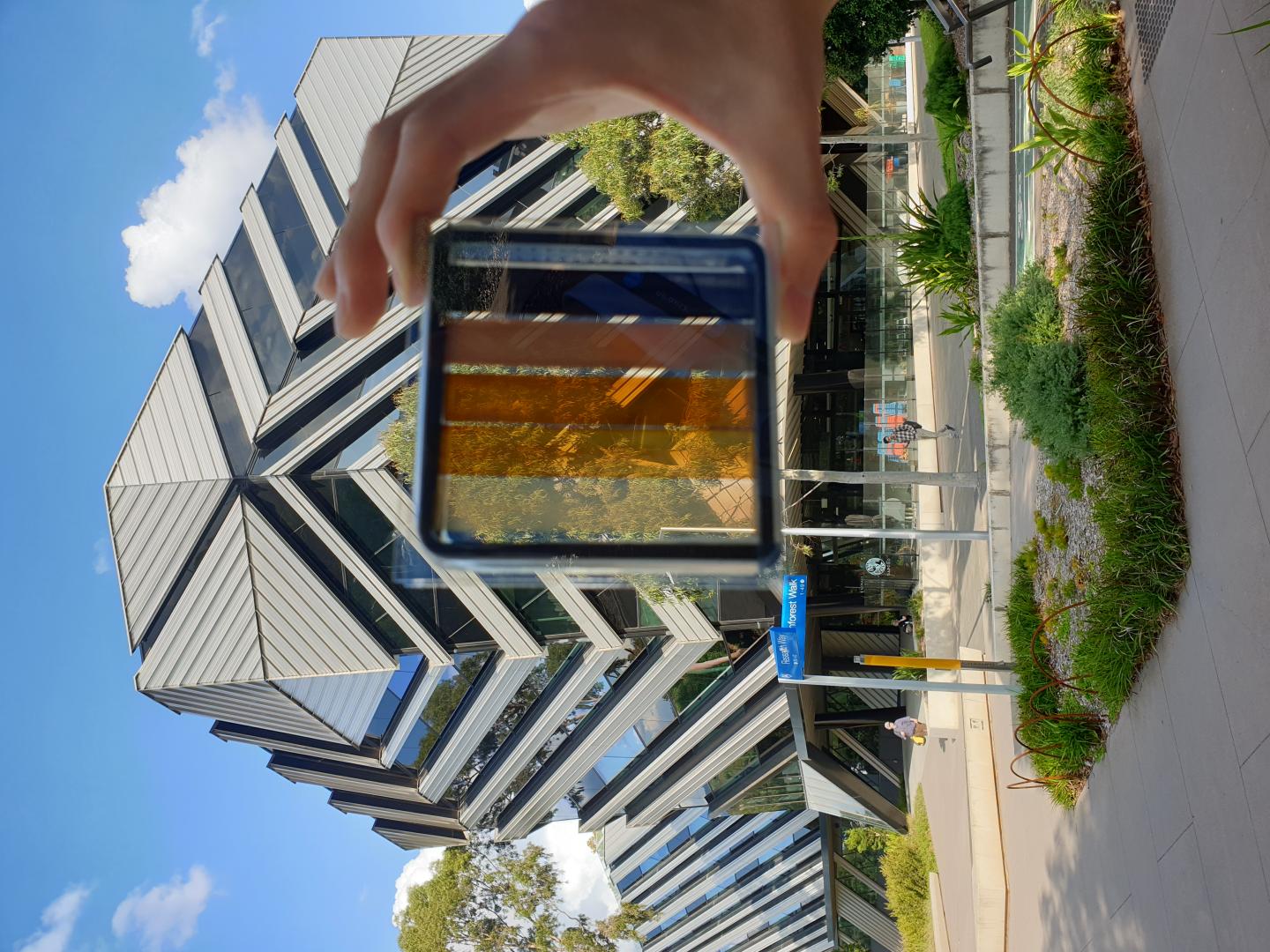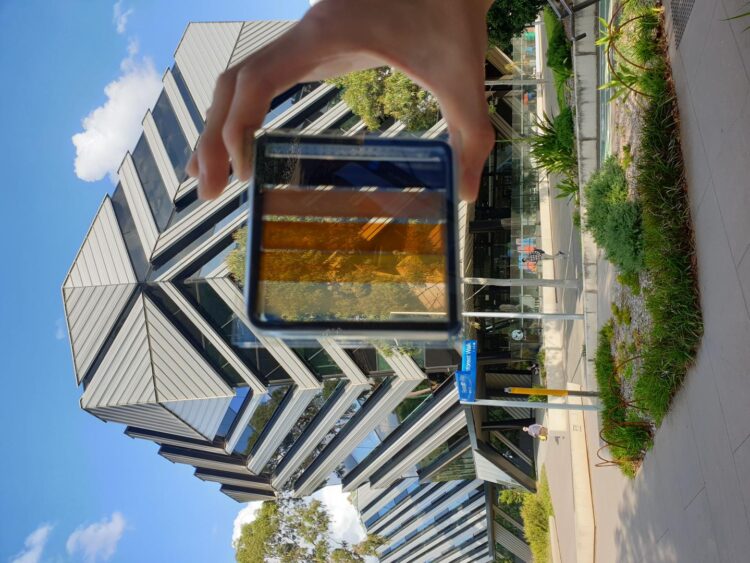Two square metres of solar window will do the same job as a standard rooftop solar panel, Australian researchers say.

Credit: Dr Jae Choul Yu
Semi-transparent solar cells that can be incorporated into window glass are a “game-changer” that could transform architecture, urban planning and electricity generation, Australian scientists say in a paper in Nano Energy.
The researchers – led by Professor Jacek Jasieniak from the ARC Centre of Excellence in Exciton Science (Exciton Science) and Monash University – have succeeded in producing next-gen perovskite solar cells that generate electricity while allowing light to pass through. They are now investigating how the new technology could be built into commercial products with Viridian Glass, Australia’s largest glass manufacturer.
This technology will transform windows into active power generators, potentially revolutionising building design. Two square metres of solar window, the researchers say, will generate about as much electricity as a standard rooftop solar panel.
The research was also supported by the Australian Renewable Energy Agency (ARENA).
The idea of semi-transparent solar cells is not new, but previous designs have failed because they were very expensive, unstable or inefficient.
Professor Jasieniak and colleagues from Monash’s Materials Science and Engineering Department and Australia’s national science agency, CSIRO, used a different approach.
They used an organic semiconductor that can be made into a polymer and used it to replace a commonly used solar cell component (known as Spiro-OMeTAD), which shows very low stability because it develops an unhelpful watery coating. The substitute produced astonishing results.
“Rooftop solar has a conversion efficiency of between 15 and 20%,” Jacek said.
“The semi-transparent cells have a conversion efficiency of 17%, while still transmitting more than 10% of the incoming light, so they are right in the zone. It’s long been a dream to have windows that generate electricity, and now that looks possible.”
Co-author and CSIRO research scientist, Dr Anthony Chesman, said the team is now working on scaling up the manufacturing process.
“We’ll be looking to develop a large-scale glass manufacturing process that can be easily transferred to industry so manufacturers can readily uptake the technology,” he said.
Solar windows will be a boon for building owners and residents, and will bring new challenges and opportunities for architects, builders, engineers and planners.
“There is a trade-off,” explained Professor Jasieniak, “The solar cells can be made more, or less, transparent. The more transparent they are, the less electricity they generate, so that becomes something for architects to consider.”
He added that solar windows tinted to the same degree as current glazed commercial windows would generate about 140 watts of electricity per square metre.
The first application is likely to be in multistorey buildings.
Large windows deployed in high-rise buildings are expensive to make. The additional cost of incorporating the semi-transparent solar cells into them will be marginal.
“But even with the extra spend, the building then gets its electricity free!” Professor Jasieniak said.
“These solar cells mean a big change to the way we think about buildings and the way they function. Up until now every building has been designed on the assumption that windows are fundamentally passive. Now they will actively produce electricity.
“Planners and designers might have to even reconsider how they position buildings on sites, to optimise how the walls catch the sun.”
Lead author Dr Jae Choul Yu, also from Exciton Science and Monash, added that more efficiency gains would flow from further research.
“Our next project is a tandem device,” he said. “We will use perovskite solar cells as the bottom layer and organic solar cells as the top one.”
As to when the first commercial semi-transparent solar cells will be on the market, “that will depend on how successful scaling of the technology will be, but we are aiming to get there within 10 years,” said Professor Jasieniak.
Jatin Khanna, Operations Manager for Viridian Glass, added: “The development of such solar windows presents an opportunity that could translate into the new glass innovations and technologies going forward.”
###
The paper is scheduled for the May edition of Nano Energy. It is available in early-release online at https:/
Media Contact
Iain Strachan
[email protected]
Related Journal Article
http://dx.





